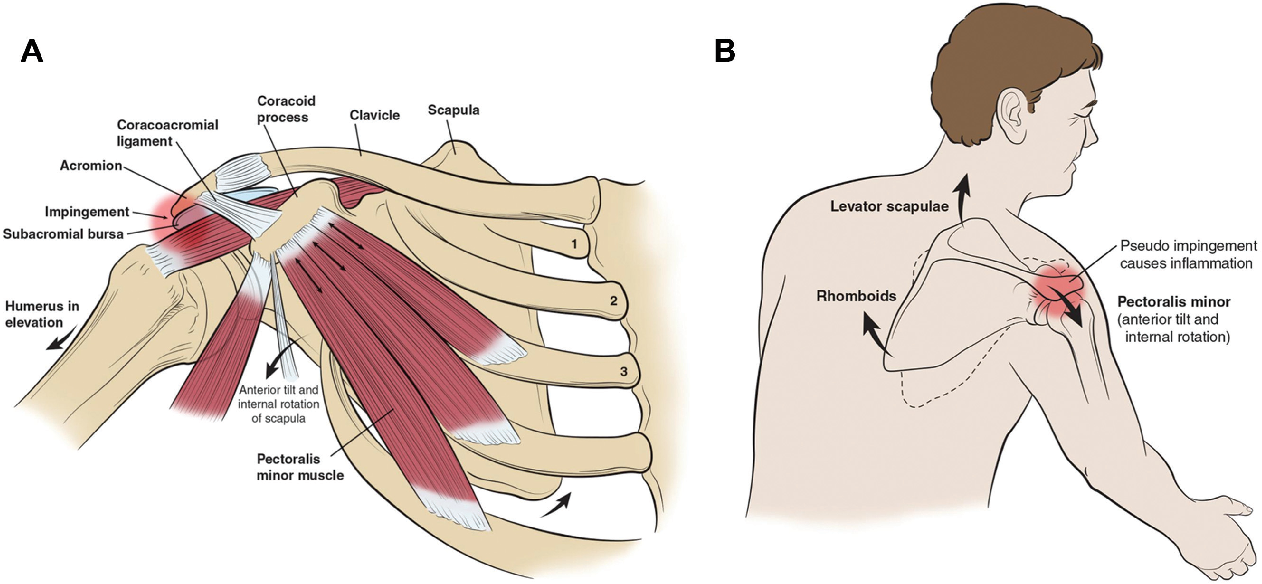- Home
- Scapular Dyskinesia
Scapular Dyskinesia
Scapular Dyskinesia
The shoulder is a ball and socket joint in the upper extremity. The glenoid (the socket) and the humeral head (ball) form the gleno-humeral joint. This joint is enclosed in a capsule. Surrounding the shoulder are the tendons of four muscles that are responsible for the initiation and modulation of shoulder movement – the rotator cuff. Around these are the larger muscles which are responsible for gross, powerful movements – the trapezius, deltoid, pectorals, rhomboids, latissimus dorsi, levator scapulae. Many of these muscles attach to the shoulder blade (scapula), or the socket part of the shoulder joint. Movement of the shoulder depends on the synchronous action of all these muscles.

Preventing Scapular Dyskinesis
You can prevent scapular dyskinesis by:
- Stretching and warming up before throwing or completing any overhead activities
- If you’re in a sport, following age and league pitch count guidelines
- Paying attention to correct ways to throw, especially important for children entering sports
- Not forcing a range of motion when lifting, especially overhead
When your shoulder blades aren’t stable, you may experience a shoulder disorder called scapular dyskinesis. It is characterized as losing a normal range of motion in your shoulder blades. In some cases, it is a condition of its own. Other times, scapular dyskinesis is a symptom of another health condition or injury.
Your shoulder blade is important for movement and range of motion in your shoulders. Also called the scapula, your shoulder blades provide stability to your rotator cuff.
BOOK AN APPOINTMENT
First Choice for Orthopedics &
Joint Replacements
Symptoms of Scapular Dyskinesis
Common symptoms of scapular dyskinesis include:
- Pain or tenderness around your shoulder blade, especially when you raise your arms overhead or lift something heavy
- Feeling a snap or pop that occurs with shoulder movement
- Losing strength in your affected arm and shoulder
- Changes in your posture, usually one side sagging down so that your shoulders appear asymmetrical
- Shoulder blades sticking out and looking like wings
- Feeling like your shoulder blade is out of place
Your injury may be made worse by:
- Chronic inflammation
- Injury to your rotator cuff muscles
- Shoulder stiffness
- Poor technique when throwing or lifting
Diagnosis of Scapular Dyskinesis
Scapular dyskinesis may not be obvious at first. You may feel pain or discomfort without obvious physical symptoms. Alternately, your shoulder blades may stick out with no accompanying pain or discomfort.
If you think something is wrong, talk to your doctor immediately. Allowing the condition to go on without treatment may leave you at greater risk for additional damage, including:
- Weakness
- Muscle imbalance
- Nerve damage
- Damage to your rotator cuff or surrounding cartilage
Usually, an x-ray or MRI isn’t necessary for diagnosis. Instead, your doctor may look for physical signs of other related injuries leading to your shoulder dysfunction. Occasionally a specialized nerve test is used to evaluate the extent of your damage to help determine what treatment is best.
If you notice that specific movement makes your pain or discomfort worse, be sure to share that. Include details about what happened when you first experienced a loss of motion or noticed a change in your shoulder blades.



